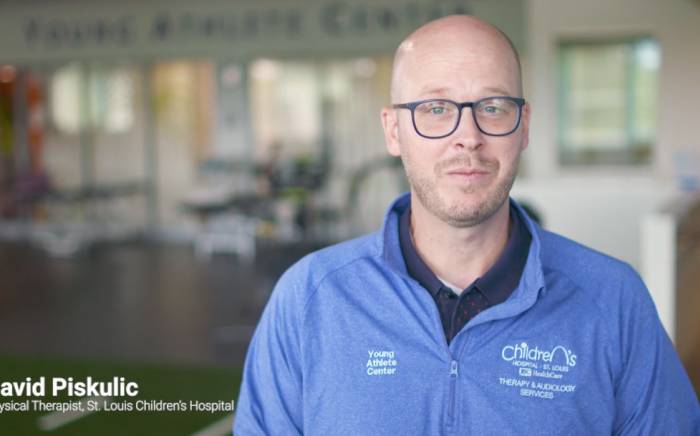 St. Louis Children’s Hospital (SLCH) is one of only a few pediatric facilities in the country—and the only one in the St. Louis region—to offer robotic surgery for children needing urologic procedures. In most of these cases, the children experience less pain and heal faster; all benefit from greater cosmesis than can be afforded by open surgical techniques.
St. Louis Children’s Hospital (SLCH) is one of only a few pediatric facilities in the country—and the only one in the St. Louis region—to offer robotic surgery for children needing urologic procedures. In most of these cases, the children experience less pain and heal faster; all benefit from greater cosmesis than can be afforded by open surgical techniques.
“We are fortunate to have our own da Vinci Surgical System and to have two pediatric urologists certified for its use,” says Washington University physician Gino Vricella, MD, a pediatric urologist who leads the robotic pediatric surgery program at Children’s Hospital. Paul Austin, MD, Washington University pediatric urologist at SLCH, is also certified for performing robotic surgery. “Depending on the procedure needed, children as young as 1 year of age can benefit from this advanced technology.”
The most common surgeries performed by Drs. Vricella and Austin are pyeloplasty to correct a ureteropelvic junction (UPJ) obstruction, correction of ureteral duplication anomalies and ureteral reimplantation for children with reflux disease. In addition, they have the ability to perform the complex appendicovesicostomy or Mitrofanoff procedure through robotic reconstruction.
“Ureteral reimplantation is one of the few procedures for which we require patients to be at least 4 or 5 years old. In children younger than this, the ureters are delicate and the bladder walls are thin, which increases the risk of complication,” says Dr. Vricella.
Dr. Vricella is among the pediatric urologists at the forefront of developing robotic surgery techniques for the pediatric population. The most complex surgery he has performed to date was for a child whose kidney disease caused polyps to develop throughout his ureter tube.
“The polyps obstructed his kidney, resulting in severe pain,” says Dr. Vricella. “Using robotic surgery, I removed his ureter and substituted for it a piece of his small intestine, connecting one end to his kidney and the other to his bladder. This removed the obstruction and allowed his kidney to drain properly.”
Dr. Vricella notes that robotic urologic surgery is superior even to laparoscopy because of the dexterity afforded by the robotic wrist. “Even though laparoscopy is minimally invasive, the need to maneuver through small ports means procedures like pyeloplasty take six to eight hours, about three times longer than if open surgery is performed,” he says. “Robotic surgery’s exceptional agility allows us to perform pyeloplasties in a time comparable to the open procedure. As a result, patients spend considerably less time under anesthesia.”
Currently, robotic surgery instrumentation is geared for adults, which means those using it for pediatric procedures need to take a creative approach to performing the surgeries.
“The smallest instruments available for the ports we use in children are 5 and 8 millimeters maximal diameter. Since children don’t have much intra-abdominal working space, to maneuver effectively you develop techniques like stitching the instruments to the abdominal wall so they are well anchored during the surgery,” says Dr. Vricella. “However, as new generations of pediatric surgeons receive training in this advanced technology, I am confident instrumentation will be developed to meet increasing demand. At this point, we are laying the groundwork for those who follow.”
To learn more about robotic procedures for urologic surgery, call Children’s Direct at 800.678.HELP (4357).








